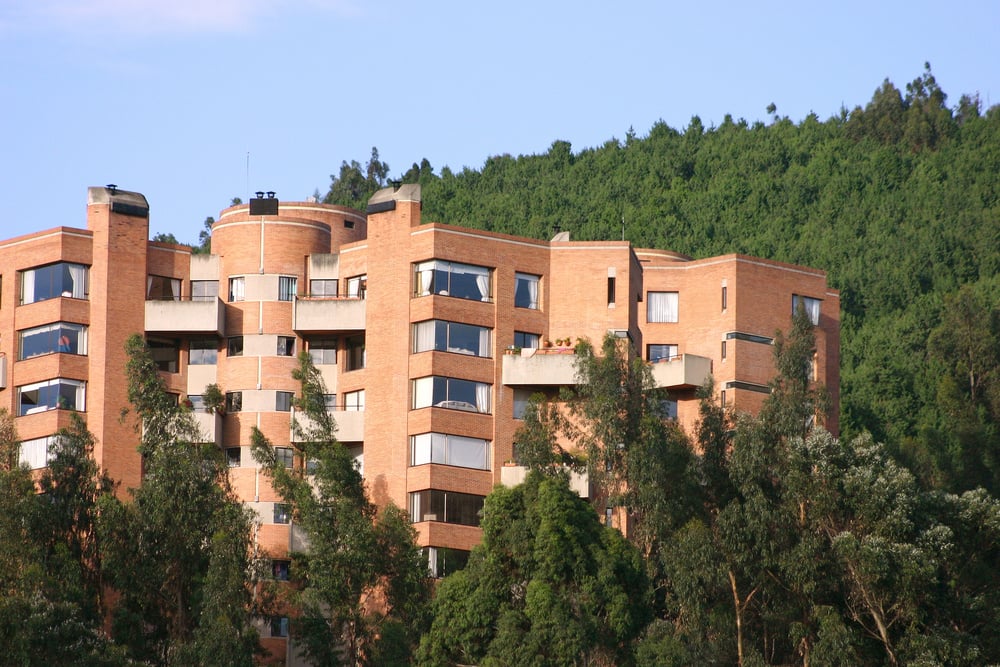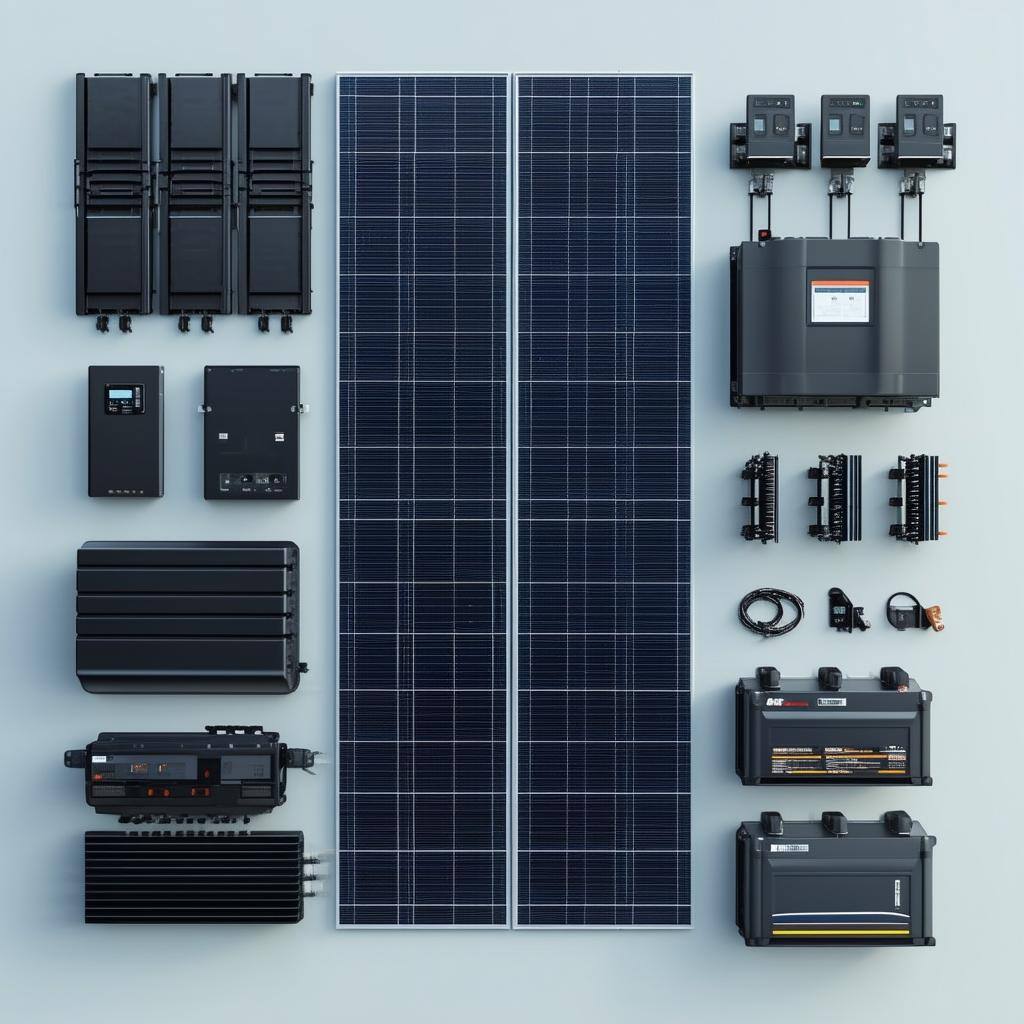Environmental Impact of Solar Power: A Deep Dive into How Solar Benefits the Planet
When it comes to clean energy, solar power is a game-changer. Imagine tapping into the sun’s energy, which is available in endless supply, to power...
6 min read
Peter Swenson : Oct 28, 2024 5:11:14 PM

If you’re renting an apartment, living in a condo, or simply don’t have the option to install solar panels on your roof, you might think that solar energy isn’t for you. But here’s the good news: with community solar and other solar alternatives, renters and homeowners without access to a rooftop can still enjoy the benefits of solar power.
Community solar is a game-changer, providing a way to go solar without needing to install panels yourself. It’s ideal for people who want to reduce their electricity bills, support clean energy, and lower their carbon footprint but don’t have the space or ability to put panels on their own property. In this guide, we’ll dive into how community solar works, its benefits, and how it compares to traditional rooftop solar. By the end, you’ll know all about community solar and other solar options that can work for your living situation.
Community solar, sometimes called shared solar, is a solar power system that serves multiple people within a community, rather than being installed on an individual’s property. In this setup, a solar farm is built in a central location, such as on unused land or even on rooftops in commercial or municipal areas. The energy generated is shared by multiple subscribers who “buy into” the solar farm, usually through a subscription model.
Community solar is designed to provide solar access to people who can’t install panels on their own roofs, and it’s an excellent choice for:
Renters: Since they don’t own the property, renters can’t install their own solar panels, but they can subscribe to a community solar program and enjoy similar benefits.
Apartment Dwellers: Most apartments don’t have individual rooftops for each unit, so tenants can’t install rooftop solar panels. Community solar allows them to access solar energy without physical space limitations.
Homeowners Without a Suitable Roof: Some homes may have shaded roofs, incorrect orientations, or structural issues that make rooftop solar impractical. Community solar provides these homeowners with a way to participate in solar energy.
People with Limited Budgets: Installing a solar system can require a significant upfront investment. Community solar, however, doesn’t have the same initial cost, making it a more budget-friendly option.
Community solar makes solar power more accessible to everyone, regardless of homeownership, property type, or financial constraints. It’s a great solution for anyone who wants to support renewable energy but can’t install their own solar panels.
Community solar typically operates on a subscription model, where participants subscribe to a portion of a solar farm’s output. The energy generated is then credited to your electric bill, often at a reduced rate, which translates to savings. Here’s a breakdown of how the community solar process works:
Community solar programs are available in many states across the U.S. You can usually find programs through your utility provider or by searching for local solar companies and cooperatives. Some programs are run by utilities themselves, while others are managed by third-party solar developers.
Once you’ve found a program, you’ll subscribe to a share of the community solar farm. This “share” represents a portion of the total energy produced by the solar array, usually measured in kilowatts or as a percentage of the farm’s capacity.
Each month, the electricity generated by your share of the solar farm is credited to your utility bill. This is called “virtual net metering.” If your solar share produces 500 kWh, you’ll receive credits on your bill equivalent to 500 kWh of electricity, reducing the amount you owe to the utility.
The savings vary depending on the program, but most community solar subscribers see a reduction in their electricity bills. Some programs offer fixed-rate savings, meaning you’ll get a discount on each kilowatt-hour produced by your share, while others offer a flat percentage discount on your total electricity usage.
Community solar subscriptions usually come in two main models:
Monthly Subscription: In a monthly subscription model, you pay a monthly fee for your share of the solar farm. The subscription fee is typically lower than what you would have paid the utility, which results in savings.
Upfront Payment: Some programs allow subscribers to pay a one-time fee for a portion of the solar farm’s output. This fee covers a set number of years (usually 10-20), and you receive bill credits for the energy produced over that period.
Both models offer cost savings, though monthly subscriptions tend to be more common as they don’t require a large upfront payment.
Community solar is especially beneficial for renters and apartment dwellers, as it provides access to solar energy without any installation or homeownership requirements. Here are some of the biggest benefits of community solar for renters:
For renters, installing solar panels isn’t an option since they don’t own the property. Community solar allows renters to enjoy the savings associated with solar power by simply subscribing to a portion of a solar farm’s energy production. Depending on the program, renters can save anywhere from 5% to 15% on their electricity bills, sometimes even more.
With community solar, there’s no need for permits, inspections, or rooftop installations. Since the solar array is located off-site, subscribers don’t have to deal with the logistics of installing and maintaining a solar system. This makes community solar an easy, hassle-free way to go solar.
Many community solar programs allow you to take your subscription with you if you move within the same utility area. For example, if you move from one apartment to another within the same city, you can typically continue your subscription without interruption. This portability makes community solar a practical option for renters who may move frequently.
Community solar gives renters the opportunity to support renewable energy and reduce their carbon footprint. By participating in community solar, renters contribute to the growth of clean energy and help offset the carbon emissions generated by fossil fuel-based electricity.
Community solar is a win-win solution for renters who want to support clean energy, save money on their bills, and enjoy the benefits of solar power without needing to install panels.
While community solar offers a lot of benefits, it’s different from traditional rooftop solar in several important ways. Let’s look at the financial and practical differences between the two options.
Traditional Solar: Installing solar panels on your property often requires a significant upfront investment, though financing options like loans and leases can make it more affordable. Homeowners may be eligible for tax credits and incentives, which reduce the cost, but these benefits are generally not available to renters.
Community Solar: With community solar, there’s typically no upfront cost or installation fees. Most programs operate on a subscription model, so participants pay a monthly fee, which is usually lower than their normal utility rate. This makes community solar a more accessible and budget-friendly option for those who can’t afford a traditional solar installation.
Traditional Solar: When you install solar panels on your home, you own the system (or lease it), which means you’re eligible for tax credits and incentives, like the federal Investment Tax Credit (ITC). Over time, the savings from these incentives, along with energy bill reductions, help offset the initial cost.
Community Solar: Since you don’t own the solar panels in a community solar program, you’re not eligible for tax credits or similar incentives. However, the reduced rates and bill credits from community solar still provide substantial savings without the need for ownership.
Traditional Solar: With rooftop solar, homeowners are responsible for maintaining the system, though most systems are low-maintenance and come with warranties. However, occasional cleaning, inspections, and repairs are part of owning a solar system.
Community Solar: One of the biggest advantages of community solar is that maintenance and repairs are handled by the solar provider. Subscribers don’t have to worry about upkeep, making community solar a hassle-free way to support renewable energy.
Traditional Solar: Rooftop solar is attached to your home, so if you move, you’ll either need to transfer ownership of the system to the new homeowner or go through the process of reinstalling solar panels at your new location.
Community Solar: Most community solar subscriptions are portable, meaning you can continue your subscription if you move within the same service area. This flexibility is ideal for renters and those who may relocate frequently.
Overall, community solar is a practical, flexible alternative to traditional solar installations, especially for those who want the benefits of solar without the commitment or responsibilities of ownership.
Community solar and other solar alternatives are opening the doors for everyone to benefit from renewable energy, even if they don’t own a home or have a rooftop suitable for solar panels. By subscribing to a community solar program, renters, apartment dwellers, and homeowners without suitable roofs can still support clean energy, save on their electricity bills, and reduce their carbon footprint.
To summarize, here are some key takeaways about community solar and why it’s worth considering:
Accessibility: Community solar is an accessible option for people who can’t install their own solar panels, whether they’re renting, living in an apartment, or have other limitations.
Affordability: With no upfront costs and flexible subscription models, community solar makes it easy to save money on electricity bills without a large investment.
Environmental Impact: By participating in community solar, you’re directly supporting clean energy and helping to reduce reliance on fossil fuels.
If you’re interested in going solar but can’t install your own system, community solar is a fantastic alternative that offers many of the same benefits as traditional rooftop solar. Take the time to research local community solar programs, and see if one could be a fit for you. By exploring your options, you’ll find that going solar is within reach, no matter where you live.

When it comes to clean energy, solar power is a game-changer. Imagine tapping into the sun’s energy, which is available in endless supply, to power...

Welcome to the world of solar energy! Whether you're just exploring the possibilities or seriously considering installing a solar power system, it's...

So you’re thinking about going solar—great choice! Solar energy is a fantastic way to lower your bills, reduce your carbon footprint, and gain some...